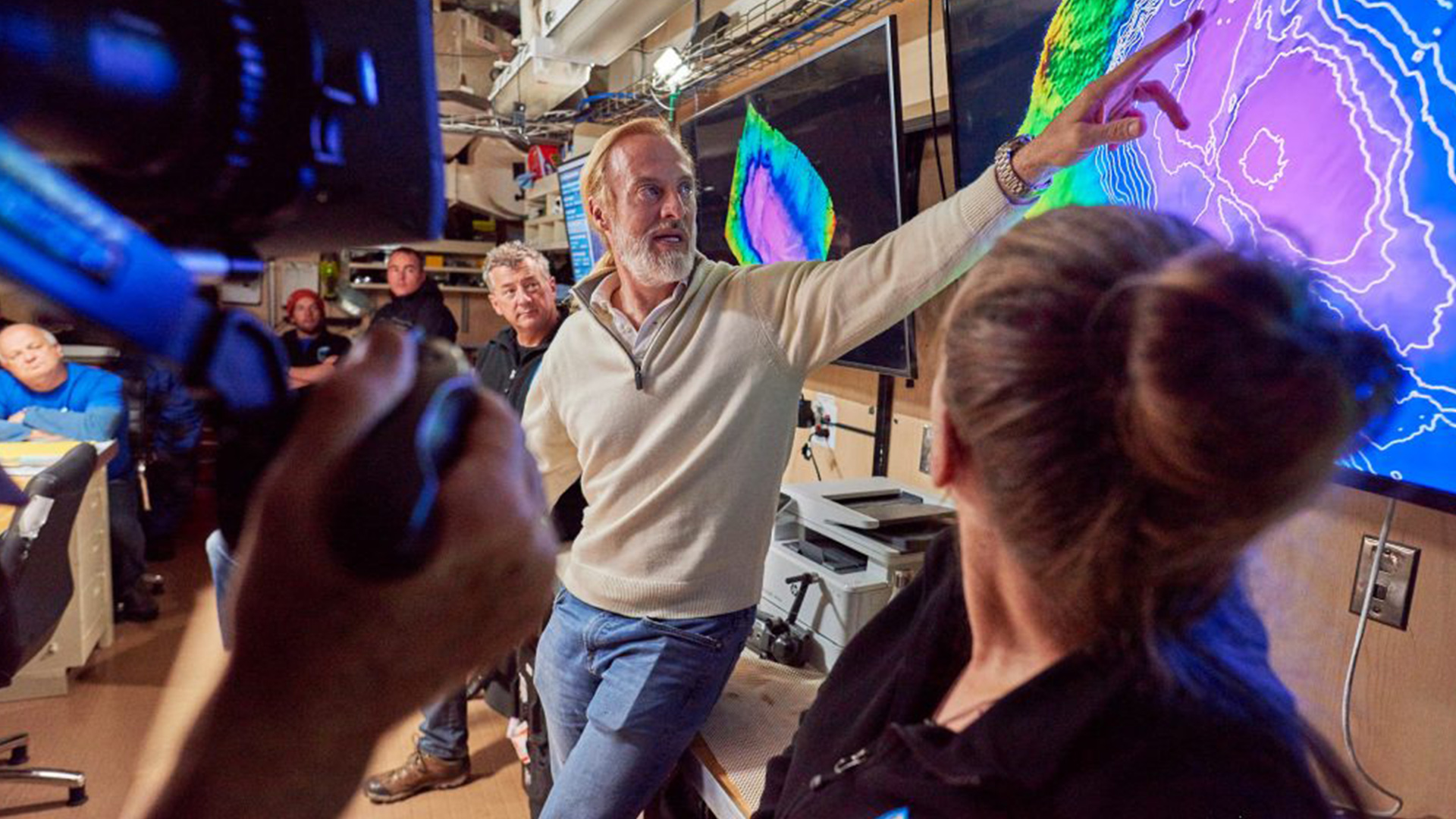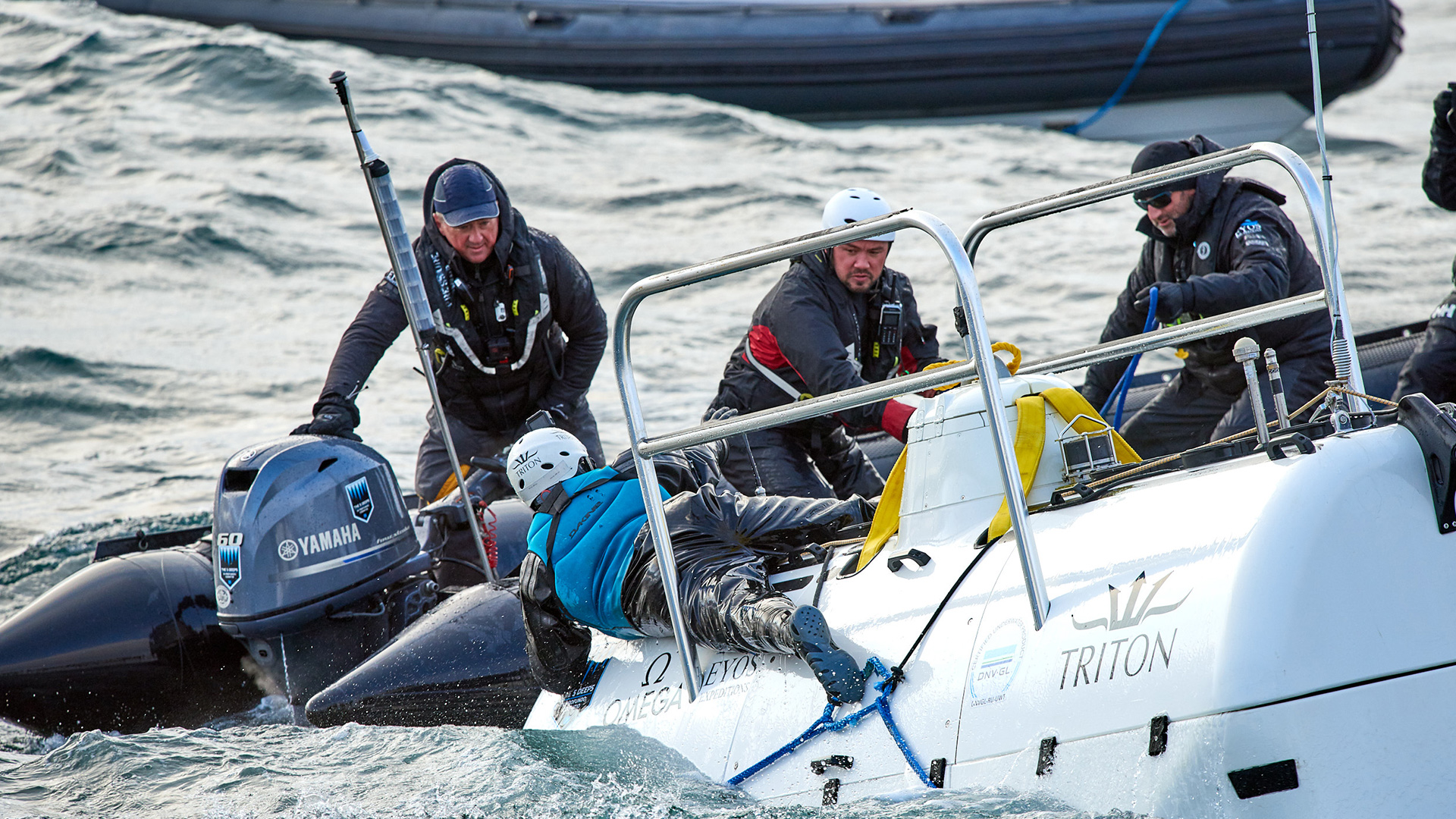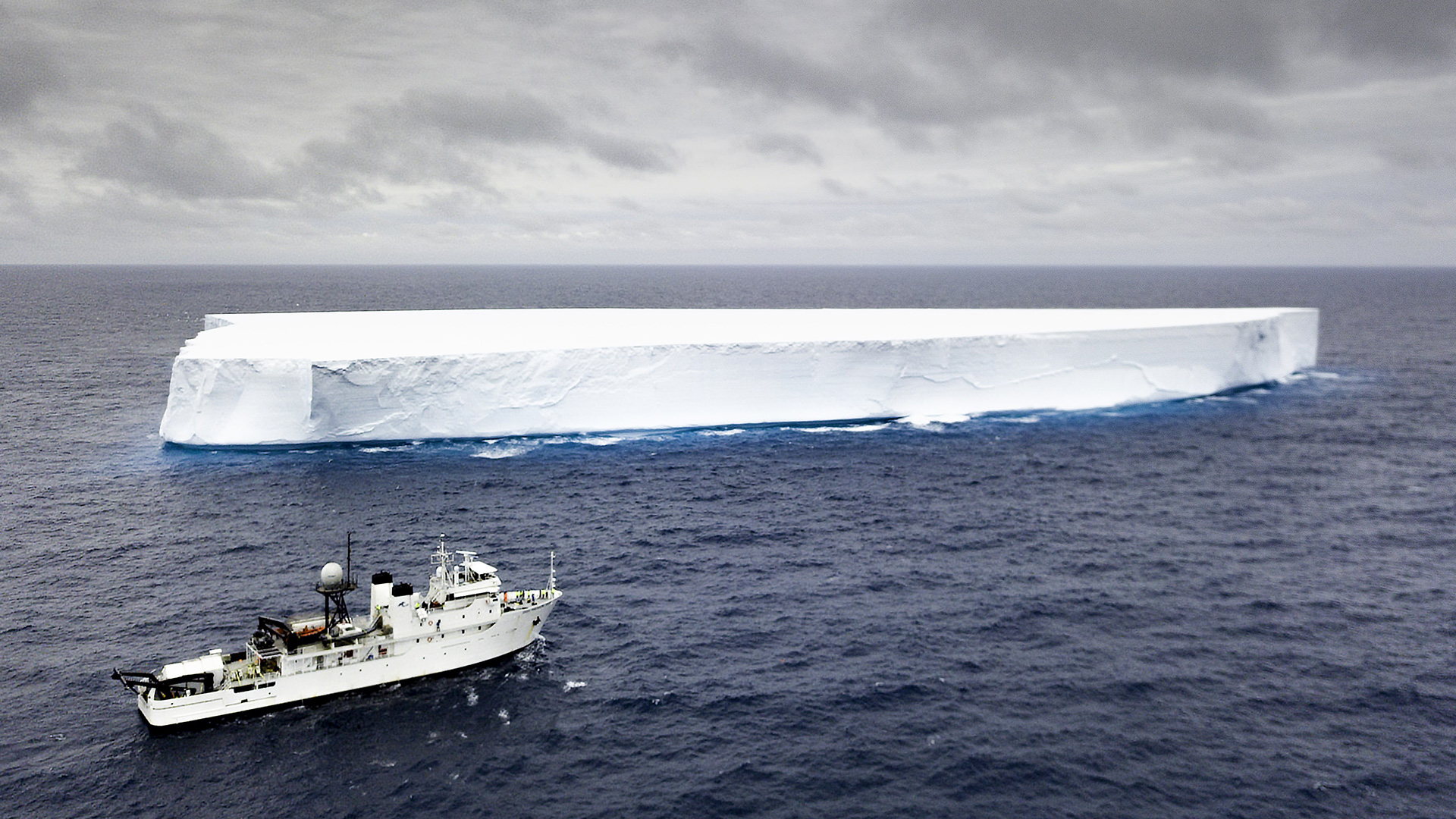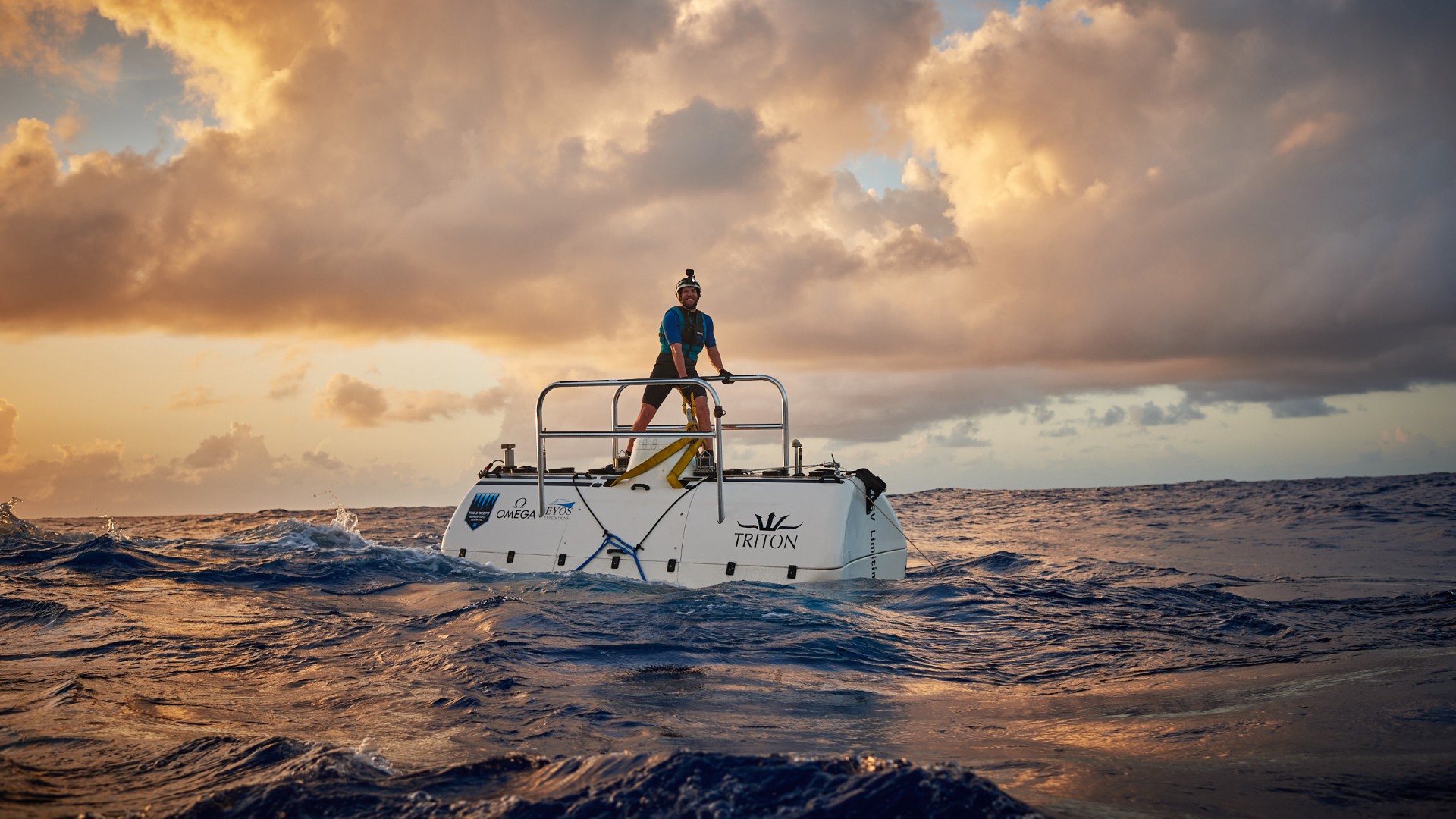EYOS Expeditions has announced the successful completion of the Five Deeps Expedition, named as the most ambitious exploration expedition of the century. The primary purpose of the expedition was to conduct manned dives to the deepest point of each of the world’s five oceans and conduct scientific discovery along the way.
The expedition included a full circumnavigation of the globe, including visits to both the Arctic and Antarctic, for a grand total of 47,000 nautical miles. In addition to achieving its primary and secondary mission objectives, the expedition also conducted additional scientific dives in the Tongan and Puerto Rico Trenches and five dives on the RMS Titanic.
Overall, 39 dives were conducted, and numerous world records and world firsts were achieved. Not only did the expedition reach a new world depth record of 10,924m, it also conducted the first ever human visits to the bottom on the Southern, Atlantic, Indian and Arctic Oceans.
Rob McCallum, EYOS Expeditions Founder and Five Deeps Expedition Leader said, “This was a very complex and fast paced expedition. Although the EYOS Expeditions team have together completed over 1200 expeditions, this one drew on all of our experience and involved most of our key staff. We deliver around 60 expeditions a year for our clients, and all of them require a customized approach and focus on every detail. It’s a well proven recipe.”
In addition to planning, managing and leading the expedition, EYOS Expeditions coordinated all the logistical support, team travel and permits.
McCallum added “The scale of the undertaking surprises most people; we have coordinated over 1,100 flights, dealt with 54 Government entities and had to provide logistical support to some of the most remote parts of the world.
The Five Deeps Expedition provided a fun challenge and great privilege; it was a rare opportunity in the modern age to develop, plan, manage and lead a major voyage of discovery.
EYOS Expeditions was perhaps the only entity in the world with the experience in oceanic diving and remote-location expeditions that could coordinate a project of this size and scale.”
Preparations for the expedition included the design and manufacture of a two-man 36000/2 submersible by Triton Submarines of Florida. This vehicle became the first and only submersible in the world classified with a ‘Depth Unlimited’ rating. Capable of reaching any ocean depth for an indefinite number of dives, the submersible is the pathfinder into Earth’s last frontier, the hadal zone. (i.e. the ocean below 6000m).
The expedition’s primary platform, the 68-meter vessel DSSV Pressure Drop, underwent a $15 million refit to prepare her for her global voyage and oceanic extreme-depth diving operations. She was equipped with a full ocean depth sonar mapping system, 4 tenders, 3 scientific landers, a submersible hanger and additional berths for the 47-person expedition team.
Ben Lyons, EYOS Expeditions CEO said “We are literally seeing vast swathes of our planet for the first time. The maps were used by the expedition team to identify and confirm the deepest point in each ocean, and to aid the navigation of the submersible. Before the dives, the maps provided us with a great planning tool. We could look at the bathymetry and plan our approach to each trench. Without them we would have been almost flying blind”.
The Expedition Team was divided into six distinct teams: ship’s operations, submersible operations, sonar mapping team, science team, hotel team and film production. EYOS Expeditions sourced many of the team members and was responsible for the onboard management and leadership of the expedition.
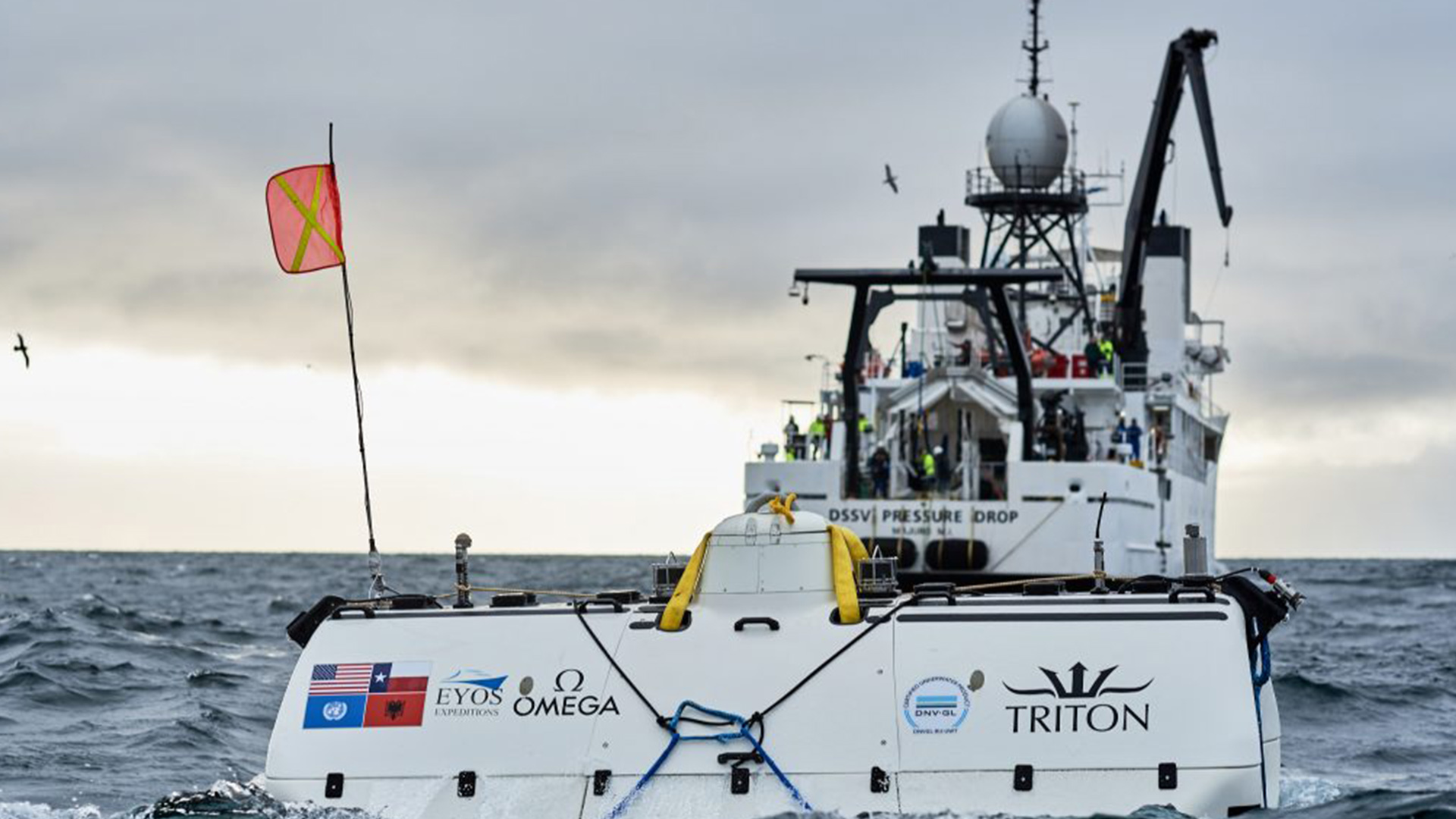
The expedition by the numbers:
- EYOS coordinated over 1,100 flights and dealt with 54 government entities for notification and permits.
- The expedition hosted over 10,000 bed-nights onboard and served over 35,000 meals.
- The expedition spanned 10 months and was broken into 12 distinct expeditions, each with its own distinct challenges.
- The Five Deeps Expedition has collected over 100,000 specimens, all of which will be sent to Newcastle University for scientific analysis and dissemination into the public domain. “The science team led by Dr. Alan Jamieson has done an incredible job. They have deployed landers on 106 occasions, with each deployment collecting biological samples and hours of valuable video footage. To date the expedition has identified over 40 new species, and this number could rise still as samples are processed.” (Ben Lyons, EYOS Expeditions, CEO)
- The expedition was equipped with a powerful full-ocean-depth sonar, a prototype Kongsberg EM-124 which allowed the team to produce high resolution 3D maps of the seafloor to 11,000m. The maps provide some of the first detailed insight into the hidden recesses of the ocean floor.
- The sub is designed to withstand 116.7 MPa. That is 100,000 tonnes of pressure bearing down on the complete sphere at Full Ocean Depth, or 11,000 tonnes per square meter, 1,500 tonnes on the viewport and 2,200 tonnes on the hatch.
- Over the entire hull that’s akin to the weight of 291 jumbo jets or 7,900 double decker busses. On each viewport that is the weight of 4 jumbo jets. On the hatch it is 5 jumbo jets or 175 London double decker busses or 1,000 large SUV’s.
- The expedition mapped over 650,000 sq. kilometres (the size of France and Iceland combined) of the deepest trenches on Earth. None of this had ever been seen by humans before. All this data is provided to the International Hydrographic Office and will be used to populate the General Bathymetric Chart of the Ocean (GEBCO).
- A rock was brought up from 10,924m and there are signs of life inside it. “There is life inside a rock that has been recovered from the deepest point in our worlds ocean. Life is everywhere; it is simply remarkable. Life always finds a way” (Rob McCallum)
- One of the landers (named Skaff) became trapped in the soft substrate at 10,920 and was unable to return to the surface. Being equipped with the world’s only full- ocean-depth vehicle the team were able to mount a salvage by deploying further landers, navigating back to rendezvous with Skaff, and release him back to the surface. “This was the deepest salvage/rescue every undertaken and demonstrates the remarkable capabilities of the Hadal Exploration System. For the first time in history we have a tool that can be used to recover objects from any depth; until now anything that was lost below 6,000m was effectively lost forever. It is a game changer.” (Rob McCallum)
- It has been described as the most ambitious exploration expedition in a century, certainly it has been profoundly successful. “To achieve all of the primary, secondary and additional mission objectives, and to prove the system, the equipment and the team over a year of injury free operations; well it just does not get any better than that. We are very proud of our achievements and looking forward to the next chapter” (Rob McCallum).
